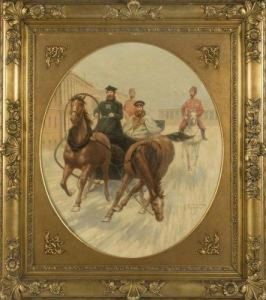Nicolai Vassilievich Pirogoff Paintings
Nikolai Ivanovich Pirogov (often anglicized as Nicolai Vassilievich Pirogoff) was not primarily known as an artist in the conventional sense but made significant contributions to medicine, anatomy, and education, which indirectly influenced the visual arts through medical illustration and instructional methods. Born on November 25, 1810, in Moscow, Russian Empire, Pirogov was a pioneering figure whose work would leave a lasting impact on medical science and surgery.
Pirogov is renowned for being one of the first surgeons to use ether as an anaesthetic in 1847 and for his development of new surgical techniques. He was also a pioneer in the use of anatomical dissection in medical education, significantly enhancing the understanding of human anatomy among medical professionals. His innovative approach to surgery and education was not only groundbreaking but also provided a wealth of knowledge that was visually documented through detailed anatomical illustrations, bridging the gap between art and science.
His most famous contribution to medical science and visual arts is his work on anatomical atlases. Pirogov's atlas, 'Anatomia Topographica,' published in the 1850s, used cross-sectional anatomy to provide clear and precise illustrations, a method that was revolutionary at the time. These illustrations served as an invaluable resource for both medical professionals and artists interested in the accurate depiction of the human form.
Beyond his scientific and medical achievements, Pirogov was deeply involved in the development of medical education in Russia, advocating for reforms that emphasized practical experience alongside theoretical learning. His dedication to education extended to the battlefield, where he served as a military surgeon during the Crimean War (1853-1856). There, he implemented the use of field hospitals and improved surgical techniques, saving countless lives and further influencing medical practices.
Pirogov's legacy extends beyond his contributions to medicine and surgery. His work exemplifies the intersection of art and science, showing how visual documentation and illustration can enhance understanding and learning in complex fields. He passed away on December 5, 1881, in Vinnitsa, now in Ukraine, leaving behind a legacy that continues to influence both the medical and artistic communities.
